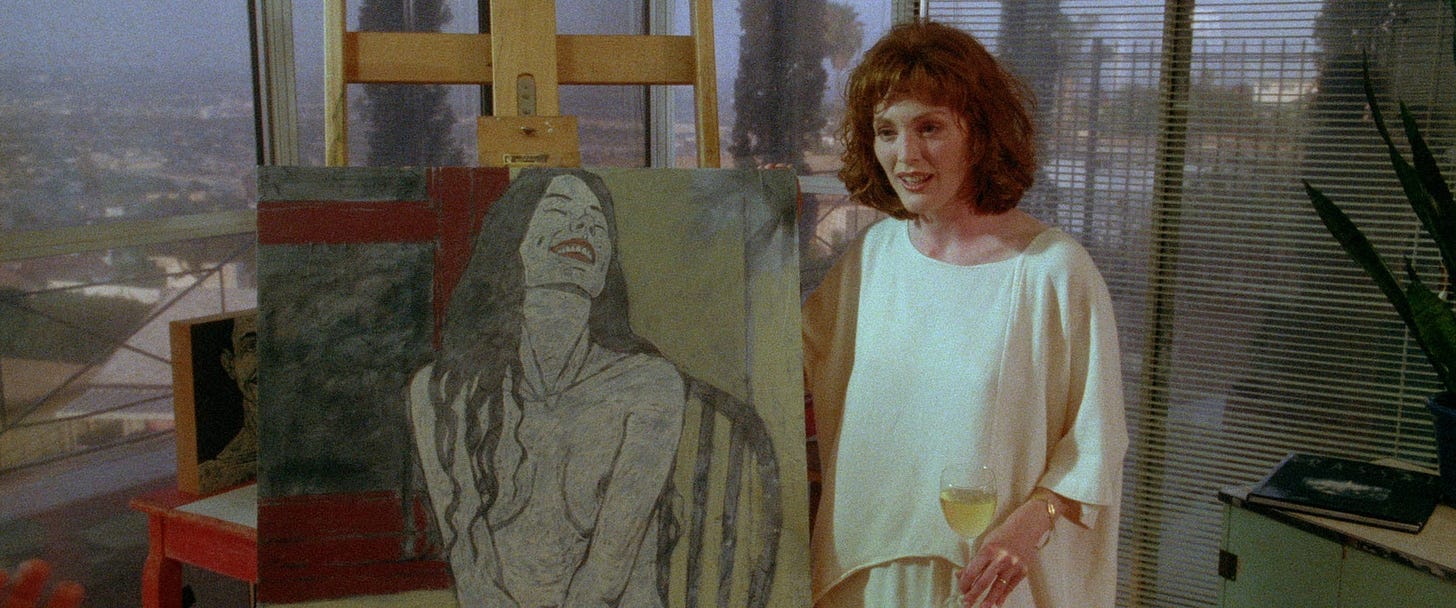Short Cuts (1993, Robert Altman)
Wednesday 9th of July, 6:15pm in the Richard Hoggart Building Cinema
Join us on Wednesday the 9th of July from 6:15pm (film starts at 6:30pm) in the Richard Hoggart Building Cinema for a screening of Robert Altman’s Short Cuts (1993). The film is 3 hours 8 minutes long, so the screening will finish at around 9:40pm.
According to the Criterion Collection:
The work of two great American artists merges in Short Cuts, a kaleidoscopic adaptation of the stories of renowned author Raymond Carver by maverick director Robert Altman. Epic in scale yet meticulously observed, the film interweaves the stories of twenty-two characters as they struggle to find solace and meaning in contemporary Los Angeles. The extraordinary ensemble cast includes Tim Robbins, Julianne Moore, Robert Downey Jr., Jack Lemmon, and Jennifer Jason Leigh—all giving fearless performances in what is one of Altman’s most compassionate creations.
Michael Wilmington, in his essay for the Criterion release, argues the film is “a Los Angeles jazz rhapsody that represents Robert Altman at an all-time personal peak,” a “many-sided, many-mooded, dazzlingly structured musical mural of a city on the edge.”
Robert Altman has been a major influence on Paul Thomas Anderson’s work: There Will Be Blood (2007) is dedicated to Altman, who died during its editing. One of the clearest connections is the similarity in form between Altman’s use of large ensemble casts and intersecting narratives, including here in Short Cuts, and Anderson’s use of the same in his second and third films, Boogie Nights (1997) and Magnolia (1999). In fact, in the period from roughly 1990 to 2008 - let’s call it ‘the end of history’ or ‘the long 90s’ - films with this formal structure were relatively common. Sometimes called ‘hyperlink cinema’, which hints at the possible role of mass adoption of the internet in this interest in large-scale stories with multiple, interwoven narrative strands, Altman had been a pioneer of this form much earlier in films like Nashville (1975).
The hyperlink film was especially suited to telling stories on a global scale, allowing it to examine globalisation and the workings of international industries, as in Steven Soderbergh’s Traffic (2000) – an examination of the global drug trade – or Stephen Gaghan’s Syriana (2005) – a political thriller about the CIA and the oil industry in the Middle East. But it could also tell the story of a city, as in both Short Cuts and Magnolia, or in Michael Haneke’s Code Unknown (2000), a brilliant, prescient and neglected film that examines the politics of race and immigration in millennium Paris from different social positions. On the other hand, Paul Haggis’s Crash (2004), with its infamously shallow view of race relations in Los Angeles, can be seen as a mainstream vulgarisation of the hyperlink film, possibly contributing – along with the rise of prestige television – to its discredit and decline.
But the resonances and affinities between Altman and Anderson’s work go beyond this specific, formal similarity. There is a shared interest between the two in a certain narrative ‘looseness’, refusing to discipline their characters to the rigours of a tight or driving plot and refusing the impulse to draw narrative and thematic strands together for a satisfying or cathartic dénouement. Altman’s pervasive cynicism about the possibility of genuine human connection in America finds its echoes in Anderson, although the latter’s cynicism is more localised – centring especially on the family and male leaders – and tempered by an optimism that sees many of his films close on a hopeful note of renewal. It seems appropriate, then, that Anderson’s most pervasively cynical film, his masterpiece There Will Be Blood, is dedicated to Altman. But there, Anderson marries Altman’s narrative looseness, and his critical view of the gulf between American myths and realities, to a Kubrickian visual rigour and stateliness not found in Altman’s work. This blending of influences in a newly distinctive and mature style, where past films like Boogie Nights and Magnolia more obviously showed the weight of individual influences – Scorsese in the former, Altman in the latter – marked a turning point in Anderson’s career.


